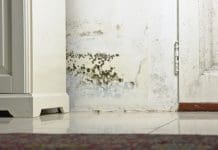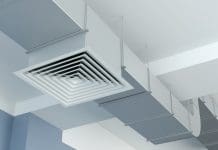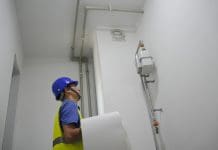Poor indoor air quality in UK homes has significant consequences for health and wellbeing. BRE looks at the issue and what can be done to address it
The danger that air pollution poses to our health is considerable. Linked to some 40,000* deaths in the UK alone, it is associated with a host of major health problems including cancer, asthma, heart disease and diabetes. But while outdoor air pollution has long been in the spotlight, air pollution indoors is often overlooked – and it’s a huge problem. In fact, poor indoor air quality in UK homes is now at a scale and magnitude that needs immediate national-level attention and action, according to the newly published ‘Better homes, Better air, Better health‘ report.
Causes for concern
As the average person in the UK spends just 8% of their time outside, total exposure to many air pollutants largely depends on indoor exposure. The range of pollutants in homes is extensive, and so are their sources. These include volatile organic chemicals (VOCs), gases such as nitrogen dioxide, ozone and carbon monoxide, particulate matter and fibres, and biological particles such as bacteria, fungi and pollen. Sources include outdoor contaminants from traffic and industry, which enter buildings by infiltration and through ventilation systems, and indoor contaminants from burning fuels, candles, tobacco, and emissions from building materials, furnishings, cleaning products, electronic equipment, toiletries, people and pets. Evidence* suggests that VOCs are also being produced by synthetic building and furnishing materials. At the same time, homes without adequate ventilation can trap a potentially toxic cloud coming from everyday household products such as air fresheners and cleaning products.
As Peter Bonfield, CEO of BRE, explains:
“This has resulted in poor air quality, with particular issues of mould and damp that have negative impacts on residents’ health”.
When homes are retrofitted, air quality is particularly impacted if there is insufficient or defective insulation, inadequate ventilation rates, issues with sealing joints and internal leaks, defective damp courses and trapped moisture. These all help to create ambient conditions for mould growth, creating unhealthy living conditions.
Moving forward
With the issue of indoor air pollution clearly alarming, finding ways of mitigating its effects is a priority. The ‘Better homes, Better air, Better health’ report, which stemmed from a recent event bringing together professionals from across the research, industry, policy and third sector communities, highlights actions that could be taken now and in the future and the knowledge needed to move forward. In this respect, a critical challenge is the lack of robust, longitudinal, shared Indoor Air Quality (IAQ) profiles, associated health consequences and datasets across the national housing stock, with the report calling for nationwide monitoring and pooling of outdoor and indoor air pollution data including encouraging widespread installation of real-time sensors that detect indoor pollutants. There is also a need to strengthen understanding of the relationship between indoor air pollution, exposure and health impacts and to be able to define the economic impact of poor indoor air quality and the health benefits of healthy homes.
Taking action
Tackling indoor pollution requires a comprehensive range of actions, with those that could be taken forward now including:
• Public health campaigns for greater public awareness;
• Raising awareness to promote political action to drive market solutions;
• Revising building regulations to protect against detrimental impacts on air quality;
• Acting now to reduce high outdoor air pollution levels;
• Conducting nationwide monitoring and pooling of air pollution data;
• Strengthening the understanding of the relationship between indoor air pollution, exposure and health impacts;
• Defining the economic impact of poor indoor air quality and the health benefits of healthy homes;
• Increasing the array of positive solutions to help tackle and reduce indoor air pollution, from changing common domestic practices, reducing pollutant emissions from construction materials and home improvement products through to novel Internet of Things solutions and changes in market products, including home insurance and mortgage products;
• Providing information and guidance for those involved in supplying, building, managing and maintaining homes.
Whichever measures are adopted, the key to implementing them is engagement with and buy-in by stakeholders right across the board – from planners, architects, specifiers and buyers to developers, facilities managers, housing associations and householders. Action is not going to be without its challenges, but given the gravity of the issue, these are challenges that must be met.
‘Better homes, Better air, Better health’ was published in April 2017 with contributions from the Royal College of Physicians, the Royal College of Paediatrics and Child Health, BRE and the ARCC network.
* Source: ‘Every breath we take: the lifelong impact of air pollution, 2016‘: a joint Royal College of Physicians and Royal College of Paediatrics and Child Health report.
. . . . . . . . . . . . . . . . . . . . . . . . . . . . . . . . . . . . . . . . . . . . . . .
BRE
Tel: 0333 321 88 11
Twitter @BRE_Group













